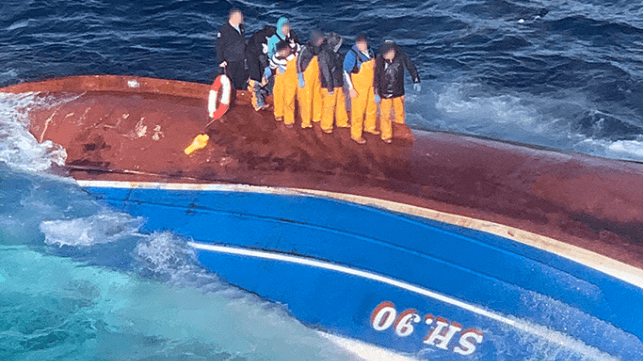Open Drain Caused Deadly Capsizing in North Sea
Tragic Capsizing of Trawler Njord

The Marine Accident Investigation Branch (MAIB) has released its final report on the tragic capsizing of the stern trawler Njord. The vessel sank approximately 50 nautical miles northeast of Peterhead, Scotland, in March 2022. The investigation revealed that modifications made to the ship after its construction significantly compromised its stability. Furthermore, the report indicated that the massive haul of fish the crew caught was enough to tip the vessel over. This incident highlights the critical importance of safety measures and proper vessel management in the fishing industry.
Details of the Incident
On March 5, 2022, the 27-meter trawler Njord set sail from Peterhead with a crew of eight, aiming to fish in the Norwegian sector of the North Sea. The following morning, the vessel reached a location about 130 nautical miles northeast of Peterhead. Here, the crew deployed their fishing net over a gas pipeline linked to the Sleipner A gas platform. They towed the net along the pipeline until around 11:00 AM, when they began to haul it in. The catch was unprecedented, totaling approximately 30 tonnes of fish, the largest the crew had ever seen.
Philippine Cargo Ship Capsizes in Rough Seas Killing One Crewmember
The Njord was built in 1992 and featured a unique design not commonly used in high-seas fisheries. Its net reels were located at the stern, while the recovery of the catch took place at the starboard bow. The crew had to haul the cod end up over the starboard rail using a winch and lifting frame, then feed the fish into a hatch on the foredeck for processing. However, this time, the crew faced an overwhelming challenge. After towing the cod end to the starboard side, they began lifting the fish into the hopper on the foredeck. After about ten lifts, the vessel began to list at an alarming angle of 10-15 degrees.
As the crew went below deck to process the catch, the skipper ordered them to haul in more fish to fill the hopper. The situation escalated quickly. On the third lift, the vessel took on a heavy list due to the weight of the fish. Despite attempts to cut loose the net, the Njord rolled over to starboard. The crew had only one life ring for eight people and no immersion suits. Tragically, none of the life rafts deployed, likely entangled in the vessel’s rigging. The crew’s survival depended on their quick thinking and the timely activation of the vessel’s Emergency Position Indicating Radio Beacon (EPIRB).
As the situation deteriorated, the Norwegian Coast Guard responded swiftly. A search and rescue helicopter arrived on the scene shortly after the EPIRB activated. However, the Njord began to sink rapidly, leaving the crew in the water. The rescue operation was fraught with danger, but ultimately, some crew members were saved. Unfortunately, one crew member did not survive, highlighting the tragic consequences of this maritime disaster.
